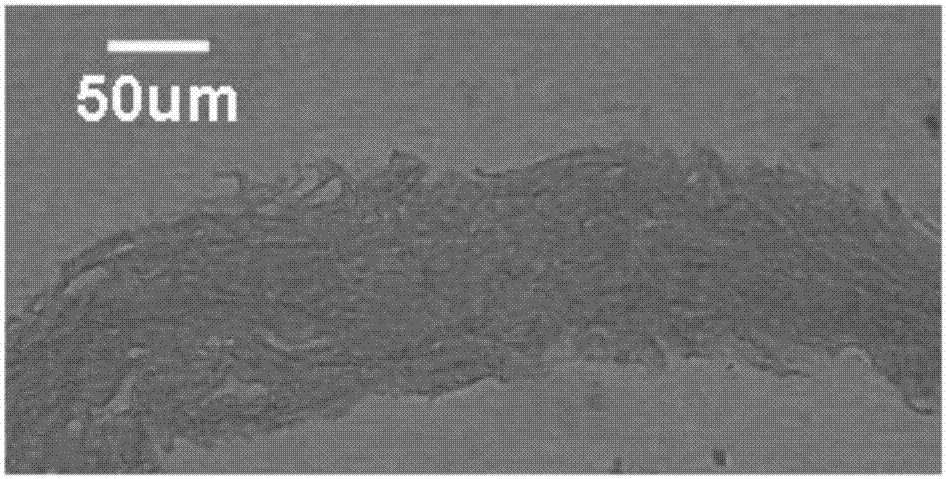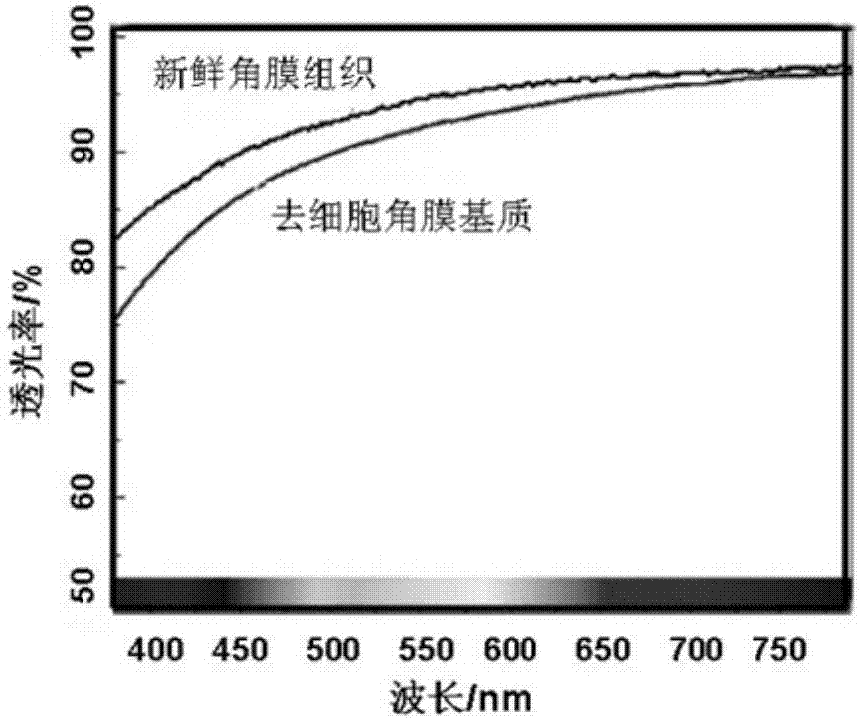Application of acellular cornea stroma lens in treating ophthalmic diseases
A technology for corneal stroma and ophthalmic diseases, applied in the field of tissue engineering, can solve the problems of original shape, curvature change, poor predictability and safety, and high astigmatism, and achieve the effect of reducing immunogenicity, improving mechanical strength, and safety
- Summary
- Abstract
- Description
- Claims
- Application Information
AI Technical Summary
Problems solved by technology
Method used
Image
Examples
preparation example Construction
[0037] The invention provides the application of the decellularized corneal stroma lens in the treatment of ophthalmic diseases, wherein the preparation method of the decellularized corneal stroma lens comprises: performing cell lysing and cross-linking treatment on the corneal stroma lens with the accurate thickness of the cells in sequence, and then The decellularized corneal stroma lens is obtained after sterilization.
[0038] In a preferred embodiment, the ophthalmic disease is hyperopia.
[0039] In a preferred embodiment, the ophthalmic disease is anisometropia.
[0040] In a preferred embodiment, the ophthalmic disease is hyperopia.
[0041] In the preparation method of decellularized keratoma lens:
[0042] Wherein, the 0.1%-3% TritonX-100 involved in the method of cell lysis can be, for example, but not limited to 0.1% TritonX-100, 0.3% TritonX-100, 0.5% TritonX-100, 0.8% TritonX-100, 1 %TritonX-100, 1.5% TritonX-100, 2% TritonX-100, 2.5% TritonX-100 or 3% TritonX...
Embodiment 1
[0051] Embodiment 1 Preparation method of decellularized corneal stroma lens
[0052] Step (a), disinfection: soak the corneal stroma lens with accurate thickness of cells obtained by full femtosecond laser technology in physiological saline containing 0.01 mg / ml penicillin and 0.1 mg / ml streptomycin for 3 hours , and then rinsed with 0.9% saline;
[0053] Step (b), cell lysis: soak in 0.9% normal saline containing 0.5% TritonX-100 for 24 hours, then rinse with 0.9% normal saline for 96 hours;
[0054] Step (c), cross-linking: Soak in 0.9% physiological saline containing a cross-linking agent, then rinse with 0.9% physiological saline for 24 hours, and the cross-linking agent is 1-(3-dimethylaminopropyl)-3-ethane Carbodiimide (EDC); the mass ratio of the amount of cross-linking agent to the corneal stroma lens processed through cell lysis is 1:5;
[0055] Step (d), sterilizing: irradiating the crosslinked corneal lens with gamma rays, and the irradiation dose is 25kGy;
[0...
Embodiment 2
[0069] Embodiment 2 Preparation method of decellularized corneal stroma lens
[0070] Step (a), disinfection: Soak the corneal stroma lens with the accurate thickness of cells obtained by full femtosecond laser technology in physiological saline containing 0.05 mg / ml penicillin and 0.2 mg / ml streptomycin for 2 hours ,, and then rinsed with 0.9% saline;
[0071] Step (b), cell lysis: immerse in 0.9% normal saline containing 0.3% TritonX-100 for 48 hours, then rinse with 0.9% normal saline for 96 hours;
[0072] Step (c), cross-linking: soak in 0.9% physiological saline containing cross-linking agent, then rinse with 0.9% physiological saline for 24h, cross-linking agent N-hydroxyl sulfosuccinimide (NHS); cross-linking agent The mass ratio of the usage amount to the corneal stroma lens processed by cell lysis is 1:9;
[0073] Step (d), sterilizing: irradiating the crosslinked corneal lens with gamma rays, and the irradiation dose is 25kGy;
[0074] It should be noted that, in...
PUM
 Login to View More
Login to View More Abstract
Description
Claims
Application Information
 Login to View More
Login to View More - R&D
- Intellectual Property
- Life Sciences
- Materials
- Tech Scout
- Unparalleled Data Quality
- Higher Quality Content
- 60% Fewer Hallucinations
Browse by: Latest US Patents, China's latest patents, Technical Efficacy Thesaurus, Application Domain, Technology Topic, Popular Technical Reports.
© 2025 PatSnap. All rights reserved.Legal|Privacy policy|Modern Slavery Act Transparency Statement|Sitemap|About US| Contact US: help@patsnap.com



